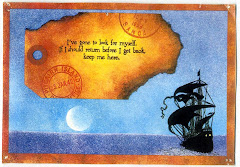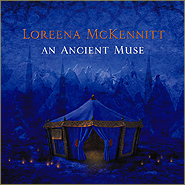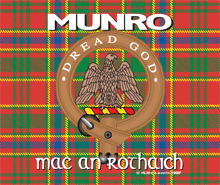
"THE FAERIE GUARDIANS"
Howard David Johnson
**********


Joanna Powell Colbert
**********
From Winter Solstice Gallery:
"The figure of the Holly King is a type of Green Man, the British vegetation god. In some mythologies of the changing seasons, the year is divided in half and is ruled alternately by the Holly King and his twin brother the Oak King. Echoes of their battles at midsummer and midwinter are found throughout British folklore, as in the mummer plays of St. George and in the tale of Sir Gawain and the Green Knight."
From “The Mythology and Folklore of the
For most of us the sight of holly leaves and berries is inextricably linked with Christmas, whether we celebrate this as a secular or a religious festivity. Christmas brings with it many traditions and it is probably the one time when many of us still practice at least a few old folklore customs today. Indeed in some parts of
Though holly doubtless was, and still is, brought into the house for its shiny green leaves and berries, which reflect the light and add colour to the dark days of Yule, it has another significance as well. Christian symbolism connected the prickly leaves with Jesus' crown of thorns and the berries with the drops of blood shed for humanity's salvation, as is related, for example, in the Christmas carol, 'The Holly and the Ivy'. Yet even here the reference to these two plants refers to a pre-Christian celebration, where a boy would be dressed in a suit of holly leaves and a girl similarly in ivy, to parade around the village, bringing Nature through the darkest part of the year to re-emerge for another year's fertility.
Holly was also brought into the house variously to protect the home from malevolent faeries or to allow faeries to shelter in the home without friction between them and the human occupants. Whichever of prickly-leaved or smooth-leaved holly was brought into the house first dictated whether the husband or wife respectively were to rule the household for the coming year.
In Celtic mythology the Holly King was said to rule over the half of the year from the summer to the winter solstice, at which time the Oak King defeated the Holly King to rule for the time until the summer solstice again. These two aspects of the Nature god were later incorporated into Mummers' plays traditionally performed around Yuletide. The Holly King was depicted as a powerful giant of a man covered in holly leaves and branches, and wielding a holly bush as a club. He may well have been the same archetype on which the Green Knight of Arthurian legend was based, and to whose challenge Gawain rose during the Round Table's Christmas celebrations.
However the folklore of the holly is not solely connected with Yuletide festivities. Like several other native trees it was felt to have protective properties, and there were taboos against cutting down a whole tree. Hollies were frequently left uncut in hedges when these were trimmed. A more arcane reason for this was to obstruct witches who were known to run along the tops of hedges, though more practically farmers used their distinctive evergreen shapes to establish lines of sight during winter ploughing. Apparently the Duke of Argyll even had a prospective road rerouted to avoid cutting down a distinctive old holly in 1861.
Although the felling of whole trees was said to bring bad luck, the taking of boughs for decoration, and the coppicing of trees to provide winter fodder, was allowed. Holly leaves proved to be particularly nutritious as winter feed for livestock, and some farmers even installed grinders to make the pricklier leaves more palatable. Coppicing also allowed the holly's hard, white, close-grained wood to be used for inlaid marquetry and to make chess pieces and tool handles. Folklore suggested that the wood had an affinity for control, especially of horses, and most whips for ploughmen and horse-drawn coaches were made from coppiced holly, which accounted for hundreds of thousands of stems during the eighteenth century.
In Scotland the Gaelic name for holly, Chuillin, appears across the country from Cruach-doire-cuilean on Mull, where the local McLean clan adopted holly as their clan badge, to Loch a' Chuillin in Ross-shire in the north; the town of Cullen in Banffshire may also have derived its name from a local holly wood.
Holly trees were traditionally known for protection from lightning strikes, to which end they were planted near a house. In European mythology, holly was associated with thunder gods such as Thor and Taranis. We now know that the spines on the distinctively-shaped holly leaves can act as miniature lightning conductors, thereby protecting the tree and other nearby objects. Modern science occasionally catches up with an explanation for what may previously have been dismissed as superstitious lore!
"But the hue of his every feature
Stunned them: as could be seen,
Not only was this creature
Colossal, he was bright green
No spear to thrust, no shield against the shock of battle,
But in one hand a solitary branch of holly
That shows greenest when all the groves are leafless;"
from 'Sir Gawain and the Green Knight' ca 1370 - 1390, author unknown
**********
"Heigh ho! sing heigh ho! unto the green holly:
Most friendship is feigning, most loving mere folly:
Then, heigh ho, the holly!
This life is most jolly."
from 'As You Like It' by William Shakespeare
By Lady Isadora
Tune: “Noel Nouvoulet” Traditional
Sing we of a mystery, now as long ago
Blood red holly berries, blood upon on the snow
The Oak king shall rise, the waxing year to bring
Therefore bid we farewell to the Holly king
Now in deep midwinter all seems in a trance
Comes the golden Oak King in his age old dance
Comes he to slay, yet honor he does he bring
To his fallen brother the darksome Holly King
In the bright midsummer the year's wheel turned around
Then shall be the Oak King's blood upon the ground
Ever it comes, once more the years waning
Then shall be victorious the Darksome Holly King
Sing we of the Mystery now as long ago
Blood red holly berries, blood upon on the snow
The Oak king shall rise waxing year to bring
Therefore bid we farewell to the Holly king
**********
 Back: Julie, Dad, Ronnie
Back: Julie, Dad, Ronnie This lacquered Chinese music/jewelry box
This lacquered Chinese music/jewelry box Left to Right: Julie, John, our Cousin Kevin, Glori, Ronnie
Left to Right: Julie, John, our Cousin Kevin, Glori, Ronnie I made out like a bandit this Christmas!
I made out like a bandit this Christmas! That is one Charlie Brown Christmas tree!
That is one Charlie Brown Christmas tree! After Kristen started school, Christmas photos were no problem. We would just tuck a school photo into our Christmas cards. But before that, sometimes we went to Sears or JC Penney for her holiday photo, and sometimes I took the photos. I think Kristen was around four, maybe five, when these photos were taken. I seldom curled her waist-length hair, but this was for a special occasion.
After Kristen started school, Christmas photos were no problem. We would just tuck a school photo into our Christmas cards. But before that, sometimes we went to Sears or JC Penney for her holiday photo, and sometimes I took the photos. I think Kristen was around four, maybe five, when these photos were taken. I seldom curled her waist-length hair, but this was for a special occasion.




 I love glass-blown bird ornaments. They just plain make me happy. The reproductions today usually have big feathery tails but I prefer the older ones with the straight tails. I have found some that have lost their clips, but I just bring them home anyway (they're cheap) and tuck them in here and there in arrangements.
I love glass-blown bird ornaments. They just plain make me happy. The reproductions today usually have big feathery tails but I prefer the older ones with the straight tails. I have found some that have lost their clips, but I just bring them home anyway (they're cheap) and tuck them in here and there in arrangements. This lighted plastic music box church was always on display at Christmas at my grandma's house. I loved to sit and stare at it, and occasionally turn the key to play "Silent Night." I only knew it as the Miles Kimball church because it used to be offered in the Miles Kimball catalog. I always meant to order one for myself, but Miles Kimball stopped selling it. I was sure I could find one on eBay and I was right. I was surprised to learn that this is well known by its brand name, as the Raylite church.
This lighted plastic music box church was always on display at Christmas at my grandma's house. I loved to sit and stare at it, and occasionally turn the key to play "Silent Night." I only knew it as the Miles Kimball church because it used to be offered in the Miles Kimball catalog. I always meant to order one for myself, but Miles Kimball stopped selling it. I was sure I could find one on eBay and I was right. I was surprised to learn that this is well known by its brand name, as the Raylite church. Recognize these little choir boys, anyone? These are Gurley candles. When I was growing up, we had only the choir boys, the cute little angels and the evergreen trees. However, Gurley made many other kinds of Christmas candles and so I have added the Santas, snowmen, reindeer, elves, and so forth to my collection.
Recognize these little choir boys, anyone? These are Gurley candles. When I was growing up, we had only the choir boys, the cute little angels and the evergreen trees. However, Gurley made many other kinds of Christmas candles and so I have added the Santas, snowmen, reindeer, elves, and so forth to my collection.
 Does anyone remember the little Christmas chimes? The heat from the candles makes the top spin and produces tinkling sounds. If you're looking for them in vintage shops, they come unassembled in little boxes and you have to try to remember every year how to put together all the pieces.
Does anyone remember the little Christmas chimes? The heat from the candles makes the top spin and produces tinkling sounds. If you're looking for them in vintage shops, they come unassembled in little boxes and you have to try to remember every year how to put together all the pieces.

 I have not tried all of the Norwegian Christmas cookies listed in allrecipes.com, but here a few of my favorites: Above: Sandbakkels, or Sand Tarts. These are baked in special little tins. They are pictured here with fruit, but we used to eat them plain.
I have not tried all of the Norwegian Christmas cookies listed in allrecipes.com, but here a few of my favorites: Above: Sandbakkels, or Sand Tarts. These are baked in special little tins. They are pictured here with fruit, but we used to eat them plain. Above, Pepparkakor. My favorites are the heart-shaped cookies. No need to bake these as they can be purchased in collectible tins (different every year) at Scandinavian shops (see below).
Above, Pepparkakor. My favorites are the heart-shaped cookies. No need to bake these as they can be purchased in collectible tins (different every year) at Scandinavian shops (see below).




 Today is the first day of December - a blank new white page in a journal or engagement calendar - or upon the land. We have a beautiful blanket of snow covering the ground today. It has snowed a couple of times already this season, but nothing that covered the ground or stayed. This is our first real snow. Soft, fluffy and fresh, it covers the dirty and the ugly and makes everything pristine.
Today is the first day of December - a blank new white page in a journal or engagement calendar - or upon the land. We have a beautiful blanket of snow covering the ground today. It has snowed a couple of times already this season, but nothing that covered the ground or stayed. This is our first real snow. Soft, fluffy and fresh, it covers the dirty and the ugly and makes everything pristine. So today, I am showing you two lovely old Christmas books, both purchased at antique shops or flea markets. The first is "Why The Chimes Rang," by Raymond MacDonald Alden, and the other is "The Birds' Christmas Carol" by Kate Douglas Wiggin (and I swear that until this minute I always thought her name was Wiggins).
So today, I am showing you two lovely old Christmas books, both purchased at antique shops or flea markets. The first is "Why The Chimes Rang," by Raymond MacDonald Alden, and the other is "The Birds' Christmas Carol" by Kate Douglas Wiggin (and I swear that until this minute I always thought her name was Wiggins).

























 | My Peculiar Aristocratic Title is: |